This summer’s elections marked 30 years of democracy for South Africa. It’s fair to say South Africa’s wine industry emerged from Apartheid with a raging case of cellar palate. Today, it’s a very different story; South Africa is increasingly present in the fine wine bracket, thanks in no small part to an exponential evolution in quality. Volume has decreased, but fine wine prices have risen, welcome news in the face of election-induced rand volatility and general governmental chaos.
So how do these improvements manifest in bottle 10 years apart? A whole house of eager trade palates gathered to find out.
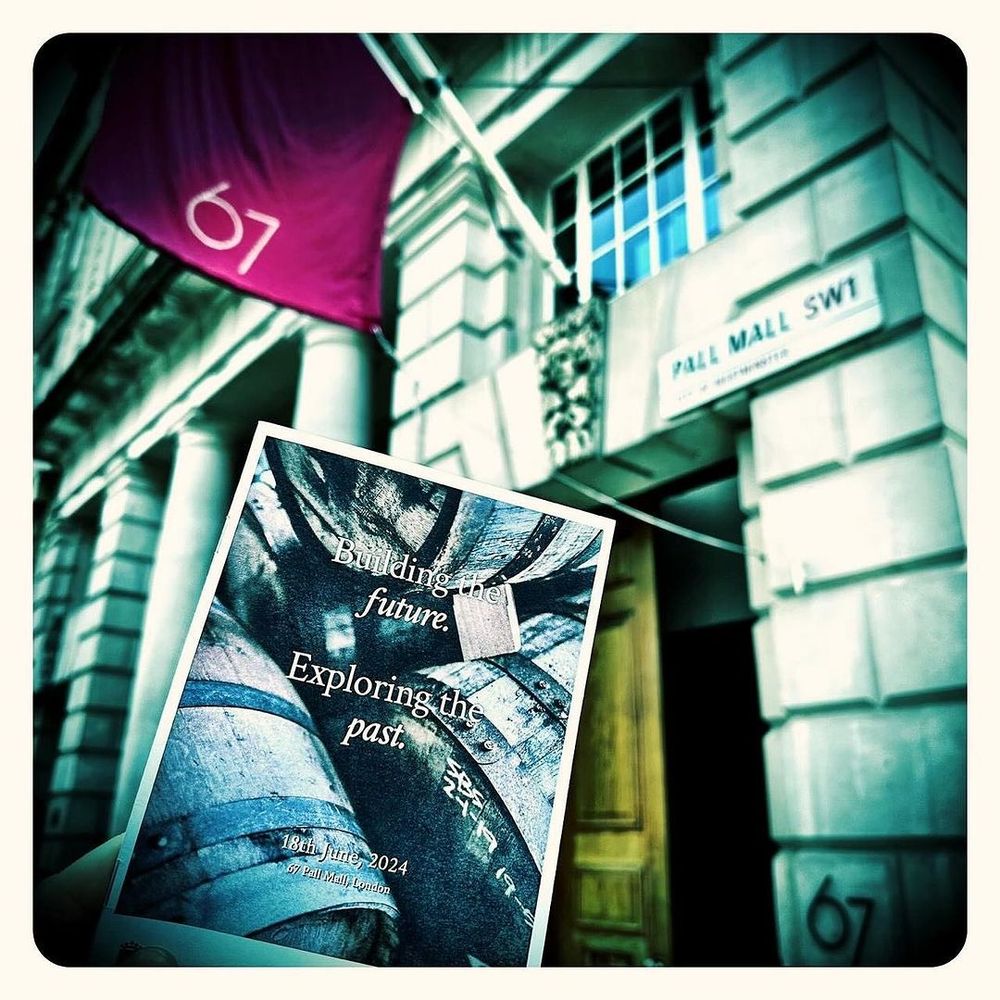
67 Pall Mall helped host the coming together of some of the finest wines from South Africa
Stefan Neumann MS was the magnificently charming and witty compère for this extraordinary comparative tasting titled 'Building the Future. Exploring the Past'. Neumann’s evident popularity with the crowd matched an obvious room-wide appreciation for the wines. Mike Radcliffe and Bruwer Raats were on hand in most eloquent form too. Neuman explained it had been the idea of Mike Radcliffe from Vilafonté to compare the current releases with another, a decade older, and it was thanks to Fells, for whom Neumann acts as a consultant, for this event to happen.
Four different producers united to share the 2011 and the 2021 vintages of Meerlust, Vilafonté, Mvemve Raats (MR) de Compostella and Glenelly Estate. (Kanonkop were set to join but sent their apologies.) Areni Global’s Pauline Vicard was on hand, too, with her crisp analysis of the fine wine concept. She kicked proceedings off with a cogent definition of fine wine.
Areni Global is a wine ‘think tank’ that examines changes in the world of fine wine; to gauge how such shifts affect production, distribution and consumption. It utilises data from the ‘community of taste’ to define an ever-evolving concept of fine wine.
So, what is fine wine?
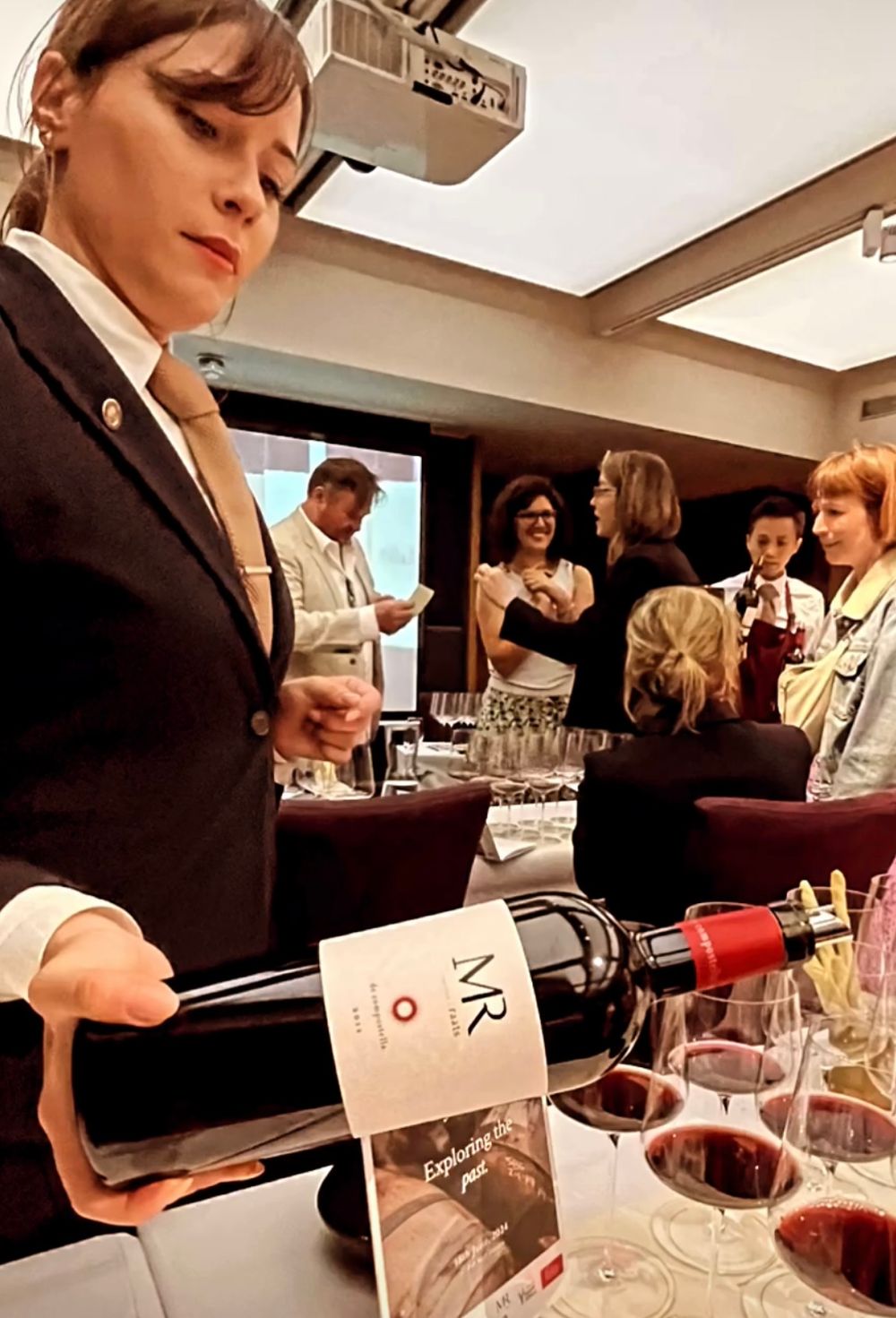
'Building the Future. Exploring the Past' event, London, June 2024
Well, explained Vicard, being a ‘human-related’ product, it’s linked to a notion of excellence as defined by both critics and the public. Notions, of course, change as society evolves. So far, Areni Global is on its fourth definition of fine wine, it being updated every two years in a white paper. South Africa is especially relevant to the definition because it ‘often sits near the top of the pyramid’, having entered post-Apartheid, somewhere near the bottom.
The fine wine attributes as defined by Areni are:
- Balance, complexity and harmony count.
- A capacity to age.
- The capacity to create emotion.
Vicard clarified: “Fine wine doesn’t happen by mistake but is related to its maker’s sense of truth.”
She explained that fine wine is complex to define, but its maker is not. Makers are driven to produce the very best that they can.
A recent addendum to the latest white paper is sustainability. A long-term approach signifies longevity and enhances reputation. If a wine is good in twenty years' time, it is perceived as something of long-term value.
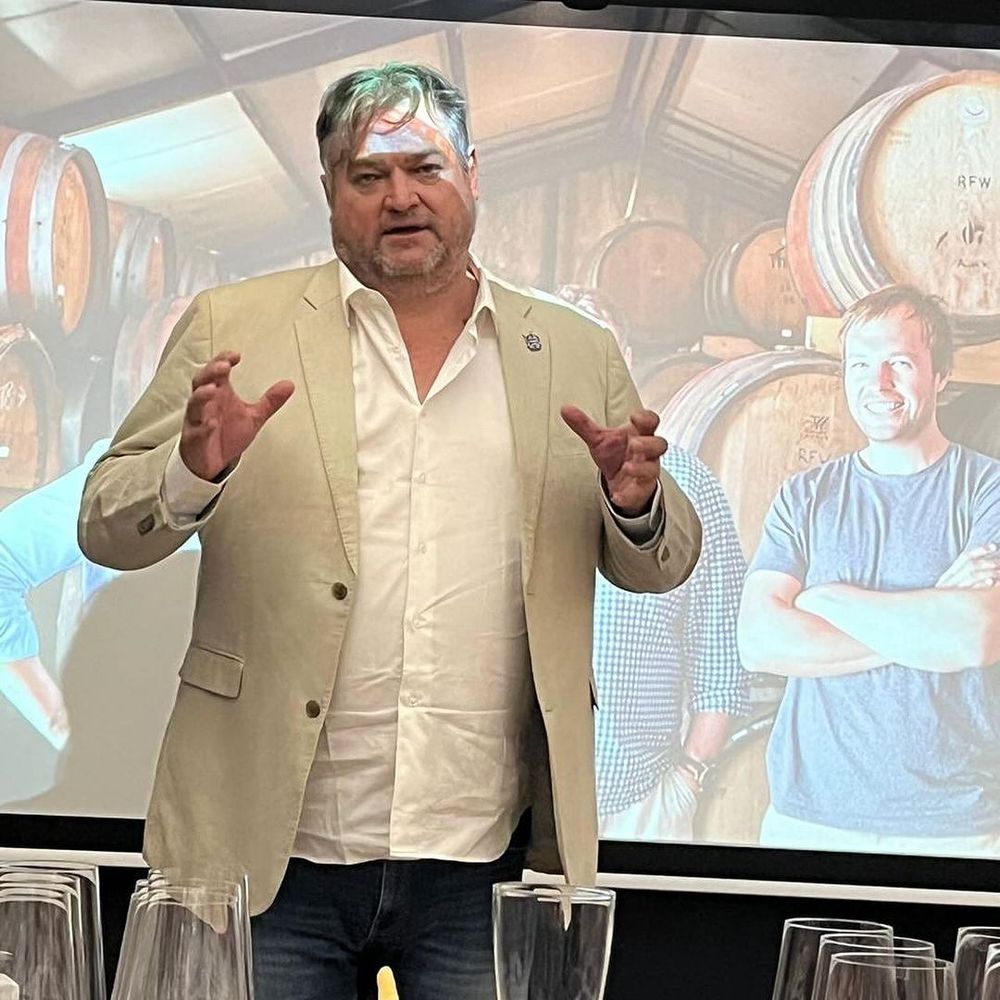
“Thirty years ago, producers planted what was needed by the market, now people plant to suit the place." Bruwer Raats.
Bruwer explained that 10 years ago, very few winemakers in South Africa comprehended the notion of fine wine and certainly did not imagine that they could produce it. Today, there is a growing cohort of winemakers that adheres to the principles of fine wine production. They are confident in their abilities and, for them, site expression is paramount. This manifests in a lighter touch, more restraint, and less new French oak. They have the courage to harvest earlier too.
“Thirty years ago, producers planted what was needed by the market, now people plant to suit the place. Today it costs half a million rand to plant a vineyard, 30 years back it was more like 45k,” Bruwer said.
Mike Radcliffe from Vilafonté recounted the changes that had taken place since Apartheid, recalling how receptive the world had been to South African wine even when it wasn’t that good. After years of sanctions South Africa produced a tidal wave of wine for export in 2004. Container loads were shifted as countries rallied around to support the fledgling Rainbow Nation.
“You could taste the lack of technology and lack of modern winemaking in the glass,” said Radcliffe, “There were no barriques and import restrictions meant winemakers were unable to taste foreign wines.”
Then came an exciting decade of realignment with travel, experimentation, the rediscovery of old vines, the rediscovery of Chenin Blanc and regionality. The next decade has been marked by renewed confidence, a search for the finest terroirs, exacting standards and dynamism. Radcliffe categorises South Africa as an “emerging fine wine origination destination.”
“The last 27 years have seen an intense accumulation of knowledge but we are still learning and have a long way to go. I look at my team, at their commitment, most of whom have been with me for 20 years and I am sure the best is yet to come.”
Vicard closed the discussion with some European context: “What Burgundy and Bordeaux have is data going back centuries and back vintages that prove the longevity of the wines they make. What South Africa has is a blank page to experiment. Fine wine production is now very exciting because it no longer needs to copy the French model, producers have the confidence and experience to fly with their own wings.”
She added that a buoyant secondary market can be a fine wine marker.
“In order to be successful on the secondary market, there are three things that you need: a long history of quality, an export market, and a hierarchy of quality that is clearly understood by consumers; this might be what South Africa is lacking today.”
Tasting the wines

None of the wines were decanted; they were opened and poured. And, in the words of Mike Radcliffe: “What a difference a decade makes.” The 2021 and 2011 vintages were completely contrasting for all our producers, 2021 is considered one of the best and 2011 is not.
MEERLUST
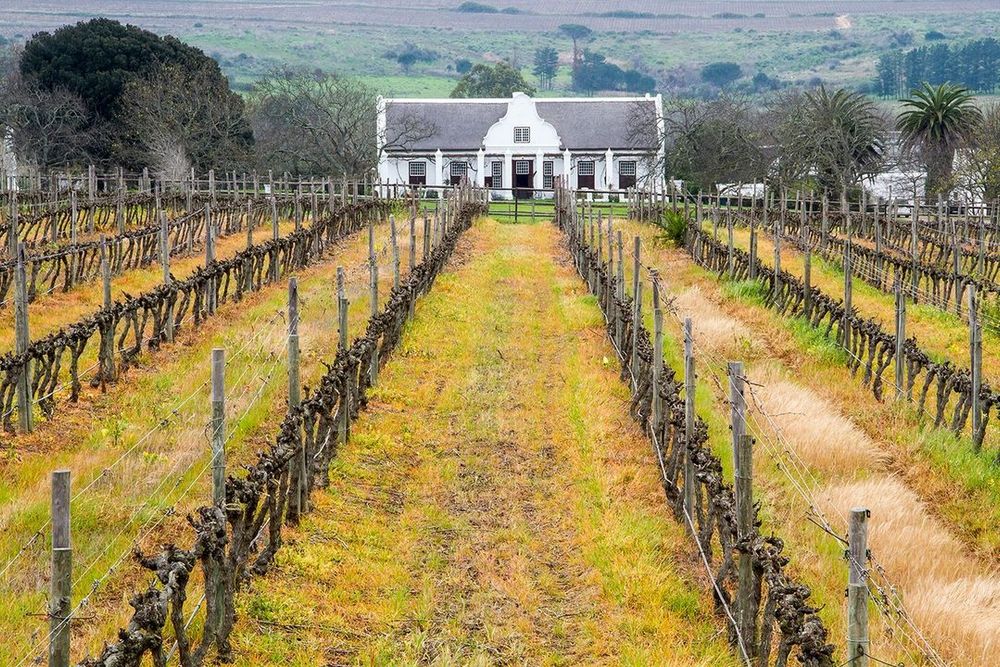
The Meerlust estate
One of the oldest estates in South Africa, Meerlust is a mere 5km from False Bay and benefits from cool sea air, Meerlust means ‘pleasure of the sea’. The farm has been owned by the Myburgh family since 1756. In 1980 they became the first South African producer to use Cabernet Franc in a Bordeaux-style blend. Meerlust sets the bar for Bordeaux blends in South Africa, a bar which has been ably represented over the years by Paul Saur at Kanonkop too.
Meerlust Rubicon is made only in the best vintages (the estate red is less than half the price) and was produced in 2021 but not in 2011, so the blend proportions vary slightly in these two samples; the family relationship, however, was evident in glass.
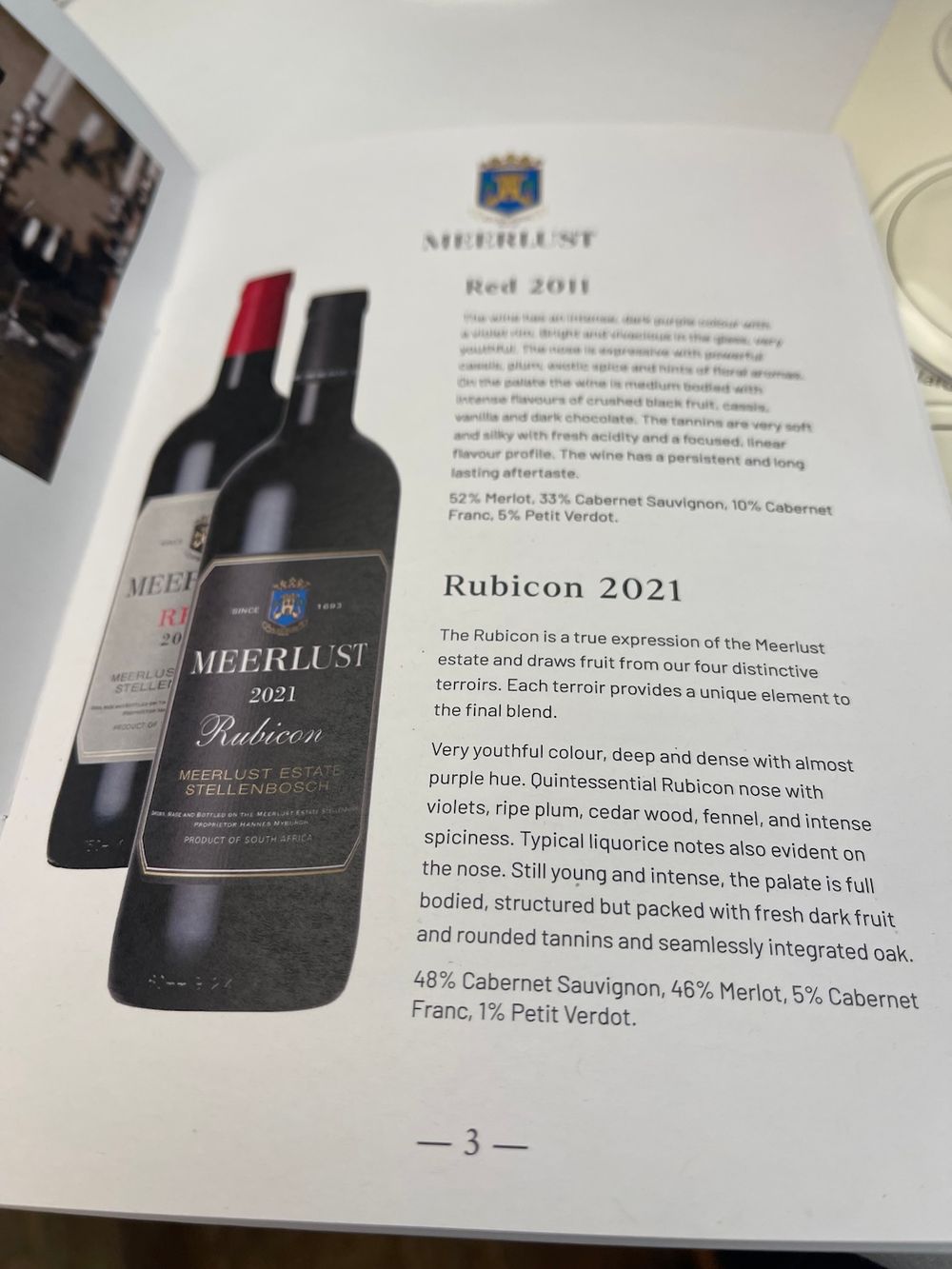
Meerlust Red 2011
52% Merlot, 33% Cabernet Sauvignon, 10% Cabernet Franc, 5% Petit Verdot; 14%abv. Fresh, spicy and complex with excellent acidity. Delicately smoky with sweet and savoury notes of tangy salted plum, sour cherry, blood, garrigue, a hint of game and a long finish. (£18 at Winetrove.co.uk)
Meerlust Rubicon 2021
48% Cabernet Sauvignon, 46% Merlot, 5% Cabernet Franc, 1% Petit Verdot; 14% abv. There are sweet and savoury elements evident on this beautifully scented wine: violets, liquorice and herbs. In the mouth, it’s elegantly sinewy with graphite, golden tobacco, plum, cherry frangipane and blackcurrants. It’s deliciously bloody and structured with round tannins and a hint of wood smoke. Intense.
MVEMVE RAATS

Mzokhona Mvemve and Bruwer Raats (l-r)
Softly spoken and gigantic, gentle giant Bruwer assured us that if asked to bring their three best vintages of the past decade, no South African producer would bring their 2011. Though not considered a great vintage, it’s not considered a bad one either, though he lamented a lack of concentration. Bruwer cited 2009, 2015, 2017, and 2021 as exceptional vintages in South Africa, with good rain, zero heat waves (over 35°C is classed as a heat wave), cold preceding winters and markedly broad diurnal temperature ranges, crucial for the development of anthocyanins.
Mvemve Raats (MR) de Compostella is a collaborative venture that began in 2004. Bruwer’s partner in this project has to be one of South Africa’s most accomplished yet modest talents, Mzokhona Mvemve. Bruwer and Mvemve make only one wine, a Bordeaux blend. Critical acclaim has been widespread. Mvemve is Zulu, he was raised in a township.
Mvemve Raats, MR de Compostella, Stellenbosch, 2011
52% Cabernet Franc, 20% Malbec, 13% Cabernet Sauvignon, 9% Merlot, 6% Petit Verdot. This was the brightest of all the 2011s - fragrant with a multitude of stimulating seductive scents; violets, dried oregano, cedar, cinnamon, graphite, cherries, raspberries and blackberries. So seductive and sweet-scented yet tangy, salty, savoury and complex – there is even a hint of high church incense. Wonderful. (BBR has a case of 6 in bond for £400).
Mvemve Raats, MR de Compostella, Stellenbosch, 2021
35% Cabernet Sauvignon, 26% Cabernet Franc, 20% Merlot, 17% Malbec, 2% Petit Verdot. Concentrated, bold and exuberantly delicious. Salty plum, blackcurrant, sour cherry, violets, graphite and golden tobacco. Fragrant with savoury herbs and a delicate moreish bitterness, it’s fascinatingly complex, structured and sinewy. (BBR has a case of 6 in bond for £806).
VILAFONTÉ
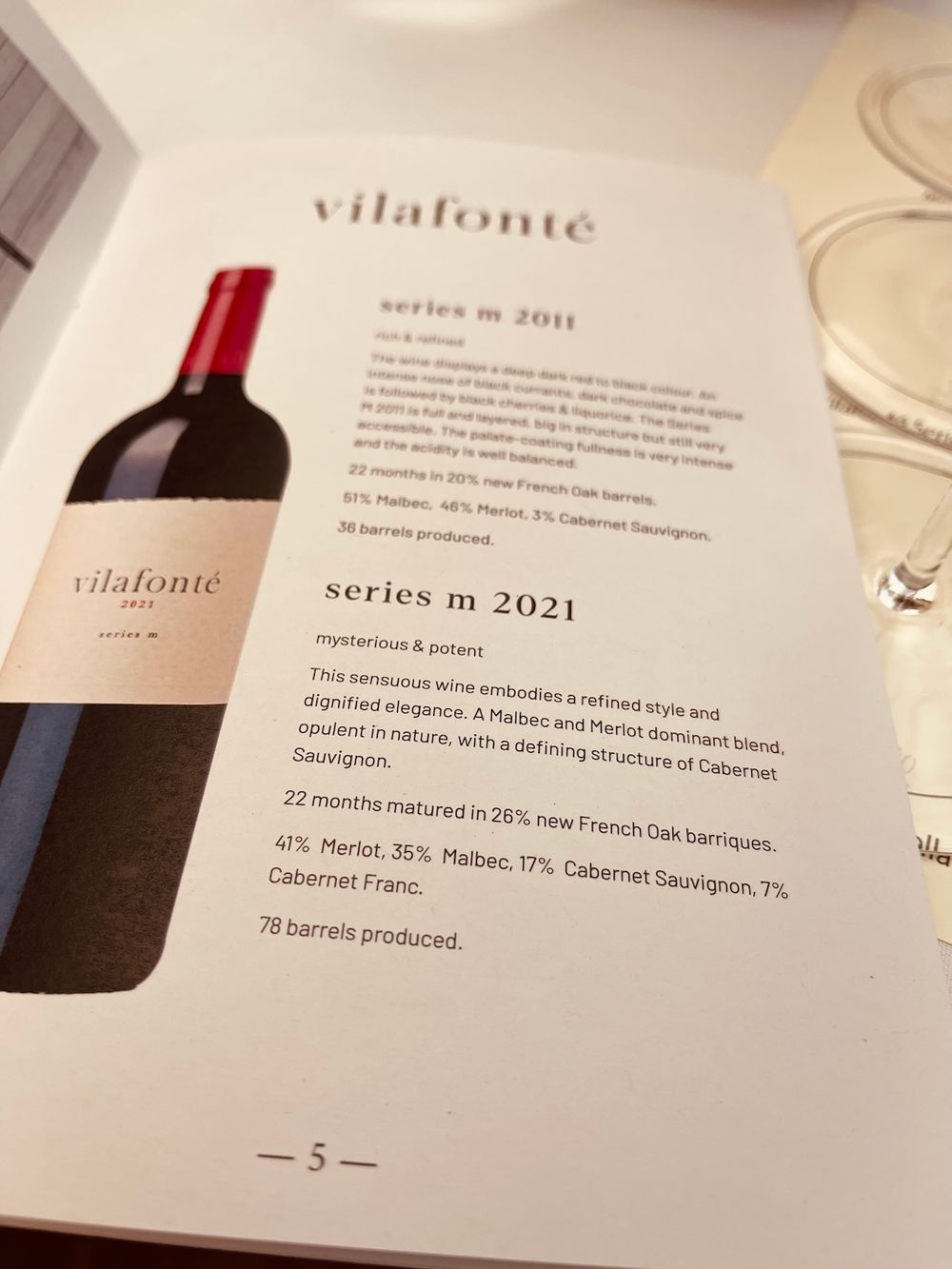
For Vilafonté, 2011 was the smallest crop they have ever had, 2021 was the biggest. Vilafonté’s Mike Radcliffe explained that the 2011 Series M had evolved faster than its counterparts as was clearly shown by the brickish red edging in the glass. 3000 bottles of 2011 were kept back until last year when "the man from Vilafonté said yes!".
Interestingly the 2009 and 2007 have yet to be released.
Vilafonté is an esteemed US-South Africa collaboration between three eminent winemakers; Mondavi’s former chief winemaker, Dr Zelma Long and her husband Dr Phil Freese, Opus One’s former vice president for grape growing and Mike Radcliffe who will become the sole partner when his colleagues soon retire.
Named after the oldest known ancient soil in the country and indeed the world. Few South African Bordeaux blends have such a large Malbec component and that’s down to Long who fell in love with Malbec in South America.
“Malbec on this site is superb. We will continue to plant more in the future. We only have four varieties and we produce only two wines. We only planned to make one but our site gave us two expressions. Series M is round soft and juicy with Merlot. Series C is Cabernet-based and gives us these more structured, intense, concentrated flavours," said Ratfcliffe.
Vilafonté Series M 2011
51% Malbec, 46% Merlot, 3% Cabernet Sauvignon; 14% abv. 20% of the wine spent 22 months in new French oak barrels. The wine is dark brown with notes of prune, graphite, salty fig, tobacco and liquorice. Salty and tangy with a good seam of acidity and spice. Eminently supable.
(corkingwines.co.uk has a case of six for circa £100 a bottle).
Vilafonté Series M 2021
41% Merlot, 35% Merlot, 17% Malbec; 14% abv. Gorgeously taut and succulent with tart plum, graphite, cinnamon and dark chocolate. Opulent and delicious, with moreish, firm tannins and an extremely long and fascinating life ahead of it. (Tauruswines.co.uk £79.99).
Vilafonté Series C 2011
51% Cabernet Sauvignon, 26% Merlot, 14% Malbec, 9% Cabernet Franc; 15% abv. Concentrated, deep and dark, and oh so lovely, it has velvety layers of spiced coffee, liquorice, graphite, and blackcurrants. Miraculously fresh - loaded with salty, moreish mineralic purity. Enticingly elegant; fine, fleshy and silkily seductive. (£219 Tauruswines.co.uk).
Vilafonté Series C 2021
56% Cabernet Sauvignon, 25% Merlot, 10% Malbec, 7% Cabernet Franc; 14.5% abv. Bright, sweet and fragrant with dense layers of aromatic violet, plum, blackberries, salty cherries, graphite, golden tobacco and high church incense. Firm, rich and focused with the tannic texture of silk velvet. Gorgeous. (£79.95 Winoship.com).
GLENELLY
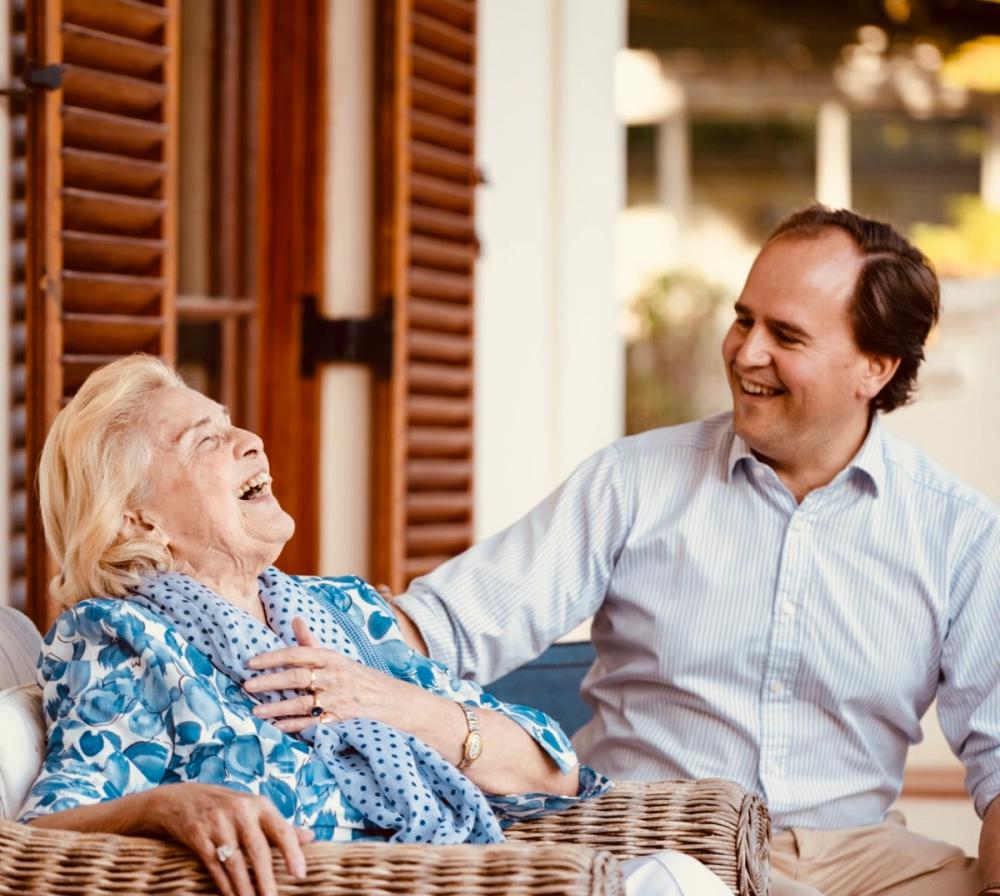
Lady May Lencquesaing (l) still oversees harvests at almost 100 years of age
Glenelly’s fascinating history deserves a footnote here, having formed part of Simon Van de Stel’s original farmstead. He was the first governor of The Cape for The Dutch East India Company and the first man to cultivate grapes in the Cape. Incredibly, it was May-Eliane Lencquesaing, the owner of Château Pichon Longueville in Pauillac who planted grapes at the farm when she bought it in 2003. She was 79 years old. May still lives there today and at 99 years of age, continues to oversee the harvests.
Glenelly Lady May 2011
85% Cabernet Sauvignon, 10% Petit Verdot, 5% Merlot; 14.5% abv. Fresh and savoury with earth, cherry, raspberry, spice, blood and a hint of bush fynbos and cedar and golden-toasted tobacco. The wine spent 22 months in new French oak. Tannins are chalky and wanton. I really love this.
Glenelly Lady May 2021
78% Cabernet Sauvignon, 9% Merlot, 7% Cabernet Franc, 6% Petit Verdot; 14.5% abv. Taut, febrile, fragrant, chewy and fresh with salted Asian plum, raspberry, succulent cherry and spice. Simply sublime. Yet to be released.
Fells is a commercial partner of The Buyer. To discover more about them click here.
































